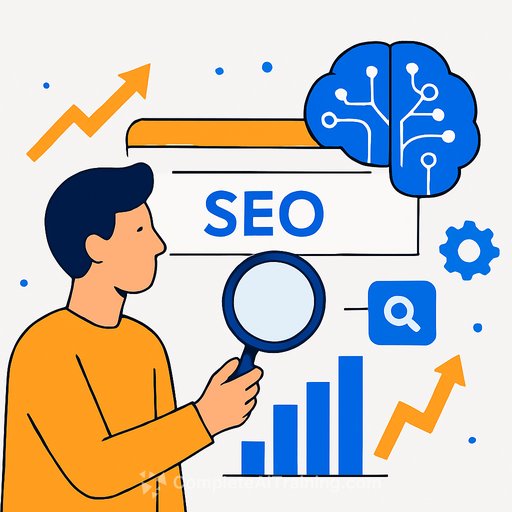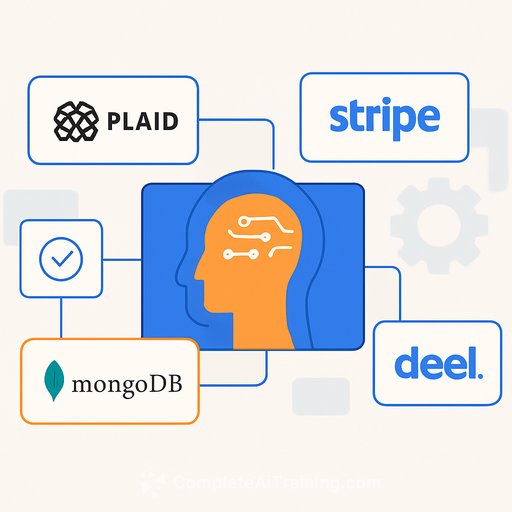Work Smarter, Not Harder: Top 5 AI Prompts Every Marketing Professional in Omaha Should Use in 2025
Last Updated: August 23rd, 2025
Omaha marketers, here’s a practical guide to adopting five AI prompts that boost SEO, email nurturing, webinars, audits, and messaging for your local audience. Expect usable drafts within about three prompt attempts, with 63% needing only minor edits. Webinar attendance typically hits around 40% of registrants, and 20–40% of those registrants convert to sales-qualified leads (SQLs). Building a prompt library will help you measure ROI and scale your efforts.
Why AI Prompts Are Essential for Omaha Marketers
Think of AI prompts as tools to get real work done, not just futuristic gadgets. Combining AI with SEO can improve your content’s formatting, metadata, and discovery of long-tail keywords that locals actually search for. Omaha’s growing business scene means you can partner with local SEO firms who understand the market and can help implement these strategies. The key is to create a prompt library with your Ideal Customer Profile (ICP), local modifiers, and community events so AI produces copy and titles that rank well and convert.
Use proven prompt templates—like those found in collections such as Glean’s 25+ AI prompts for marketing—to increase output while keeping your content relevant to Omaha’s unique market.
How We Selected These Top 5 AI Prompts
We focused on prompts that are:
- Localizable: Adaptable to Omaha’s neighborhoods, regulations, and events.
- Measurable: Aligned with clear KPIs and SMART goals to track success.
- Efficient: Supported by example templates that minimize rewrites.
EngageCoders’ research shows most marketers get a usable draft after about three prompts, and 63% of AI content requires only minor edits. This approach ensures prompts fit Omaha’s market and support repeatable, scalable content production.
1. Localized ICP + Messaging Builder
Start by building ICPs specific to Omaha using firmographic data important locally—industries like MedTech, Financial Services, Logistics, Agribusiness, and Defense, along with company size and geography. Add technographic signals to match common technology stacks in the area. Greater Omaha has over 45,000 businesses and a workforce of 500,000, giving you clear verticals to target.
Use a simple ICP checklist covering demographics, firmographics, pain points, and buying processes. Turn this into short prompt templates that generate role-based messaging and tech-fit filters. One prompt can create targeted subject lines, brief buyer-journey email sequences, and ABM-ready account lists.
The result? Spend less time chasing poor-fit leads and more time booking demos with prospects who actually fit your ideal customer profile.
2. Hyperlocal Content Calendar & SEO Titles
Create a content calendar that ties SEO-friendly titles to Omaha-specific events and channels. Set daily posting slots and test different times—data shows 7 p.m. posts often outperform 4 p.m. ones locally. This removes guesswork and helps optimize for real engagement.
Use standardized templates and tools to avoid rookie mistakes like mistimed holiday posts. Each calendar entry should link to an SEO-title prompt that includes Omaha-specific keywords and modifiers. This drives local search visibility and feeds your lead pipeline through local vendors.
The payoff: fewer last-minute scrambles, better local search rankings, and more clicks from nearby prospects.
3. Productized Email Nurture Sequence for Mid-market Leads
Turn your mid-market nurture into a repeatable service with a 5-message, behavior-triggered email sequence spread over about 7 days. This moves prospects from interest to demo-ready without manual follow-ups.
Model your sequence after proven templates like ScoreApp’s and Encharge’s inbound nurture flows, which trigger based on email opens, clicks, and trial activity. Localize the timing and copy using Omaha’s business hours and neighborhood or event references to increase relevance.
Measure behavioral signals to qualify Marketing Qualified Leads (MQLs) and automate sales handoffs. You’ll free up reps to focus on closing instead of chasing leads.
4. Campaign Performance Audit + Action Plan
Treat your campaign audits like financial checkups. Reconcile invoices, verify vendor payments against signed agreements, and spot duplicate or out-of-window charges. Audits in Nebraska have uncovered costly oversights when these controls are missing.
Consider rising overhead costs—in Omaha, leasing expenses increased about 37%, impacting budgets for staffing, paid ads, and agencies. Adjust your cost-per-lead (CPL) targets and pacing to fit these changes.
Automate monthly payment reconciliations, flag unusual reimbursements, and link CPLs to real estate and overhead trends. This helps finance and marketing teams catch issues early, avoiding expensive surprises.
5. Event/Webinar Promo Pack for Local Lead Gen
Convert webinars into reliable lead engines with a promo pack that includes a high-converting landing page template, a six-week multi-channel promotion calendar, and automated post-event nurturing that hands warm leads to sales.
Start with a Kit-style webinar page that covers the essentials and add Omaha-specific details to boost relevance. Promote via email, LinkedIn, and paid retargeting with pre-event drips and a last-day push.
Expect about 40% live attendance from registrants and 20–40% of those registrants turning into SQLs.
Building a Local Prompt Library and Measuring Impact
Think of your prompt library as a living asset. Catalog each prompt with ICP tags, expected results, and version history so editors can revert or create new variants easily. Pair this with lightweight governance to control who approves prompts and when human review is needed.
Track KPIs like:
- Number of prompt iterations to usable draft
- Edit time saved
- Click-through rates on published content
- Search ranking improvements
- Lead and SQL conversion rates
Run A/B prompt tests, log results, and update prompts through your governance process to improve relevance, brand safety, and measurable results each quarter.
Frequently Asked Questions
What are the top 5 AI prompt types Omaha marketing professionals should use in 2025?
They are: (1) Localized ICP + Messaging Builder; (2) Hyperlocal Content Calendar & SEO Titles; (3) Productized Email Nurture Sequences; (4) Campaign Performance Audits; and (5) Event/Webinar Promo Packs.
How should Omaha teams build and use a local prompt library?
Build a living library with ICP tags, expected outputs, and version history. Use templates with Omaha-specific modifiers, enforce lightweight governance on approvals and human reviews, and track KPIs per prompt.
What local benchmarks and measurements should marketers track when using AI prompts in Omaha?
Track metrics like iterations to usable drafts, percentage of drafts that need only minor edits, edit time saved, CTR on published content, search ranking shifts, lead generation, and SQL conversions.
How do I localize prompts for Omaha audiences and verticals?
Start prompts with Omaha-specific firmographic and technographic details, add timing cues relevant to local business hours or events, and include references to local case studies or regulations.
What operational steps ensure AI-generated content scales without losing local relevance?
Use structured prompt templates, catalog prompts with tags and expected outputs, run A/B tests, log results, automate audits and reconciliations, and maintain governance on prompt approvals and human reviews. Measure against clear goals and KPIs.
For marketing professionals ready to level up their AI prompt skills, exploring specialized training can help. Check out comprehensive courses at Complete AI Training to find resources tailored for marketing roles.
Your membership also unlocks:






